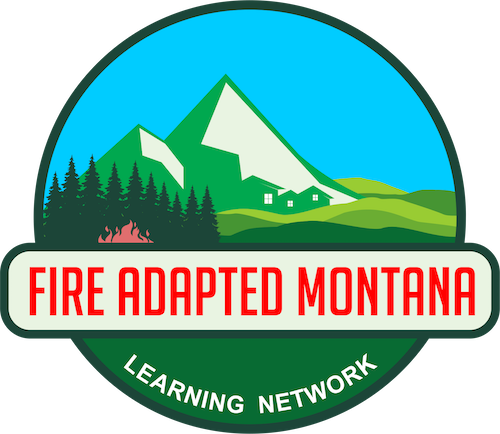WHAT IS A FIRE ADAPTED COMMUNITY?
A fire adapted community (FAC) means a community that can live along side of wildfire. It means engaged citizens that are informed, and understand the steps that they can take to mitigate their wildfire risk. It means communities that work collaboratively with their neighbors, fire departments, and agencies to be prepare their homes and know what to do when a fire comes. So when a fire does approach, homes and infrastructures can go unharmed without the need for extensive suppression efforts.
Fire adapted communities were born out of the national cohesive wildland fire management strategy, or the Cohesive Strategy. The three main tenants of the Cohesive Strategy are to 1.) restore and maintain landscapes, 2.) create fire adapted communities, and 3.) improve wildfire response.
Our network, as well as many other groups around the state and nation seek to work with communities to support their specific fire adaptation needs. May that be providing home risk assessments, supporting community wildfire ambassador programs, identifying funding opportunities, reducing fuels around homes, creating evacuation plans, improving smoke preparedness resources, and much more.
There is no silver bullet to creating a fire adapted community. Each community has its own specific needs, policies, programs, and people. While this FAC wheel does not cover every aspect of fire preparedness and adaptation, it provides a good starting point in thinking about all the different angles one can take when considering what it means to prepare a community for a wildfire.
Our state network works closely with the national Fire Adapted Communities Network (FACNet) to bring new ideas and resources from across the country back to our own state. FACNet is not only a resource for community preparedness toolkits, but an incredible network of fire practitioners around the nation working on advancing our ability to approach community wildfire preparedness and resilience.
Wildfire is an inherently complex issue. The more that we are able to hear more perspectives and learn more from one another and take those lessons back to our communities, the better prepared we can be to tackle these wicked problems. To learn more about the national FACNet you can visit their website HERE.
Free Home Risk Assessments
The Montana DNRC provides free wildfire home risk assessments. To reach out to your local service forester and request a visit, follow the link HERE.
Community Wildfire Protection Plans (CWPP’s) are collaborative planning documents that act as a tool for identifying how state and federal lands are to be managed for wildfire risk reduction projects, select effective local mitigation strategies, identify areas of high wildfire hazards, and make communities eligible for nationally competitive grant funds.
CWPP’s utilize the input from fire departments, utilities, state and federal agencies, residents, and community planners to create a plan that will best serve the needs of their community. In Montana, CWPP’s are most often done at the county level. To view your county’s CWPP follow the link HERE.
Fire Adapted Working Groups are collaborative bodies that work directly with community members to help bridge the gap between the work going on at state and federal agencies and involve the citizens within the area to create safer and more fire resilient communities. These working groups include a broad array of individuals. From fire departments, and state and federal agencies, to contractors, insurance representative, HOA’s, and interested individuals. Working groups help to identify areas of need, funding opportunities to achieve collective goals, work across boundaries for more effective treatments, and raise community engagement and participation in fire preparedness.
Find your closest fire adapted working group HERE.




